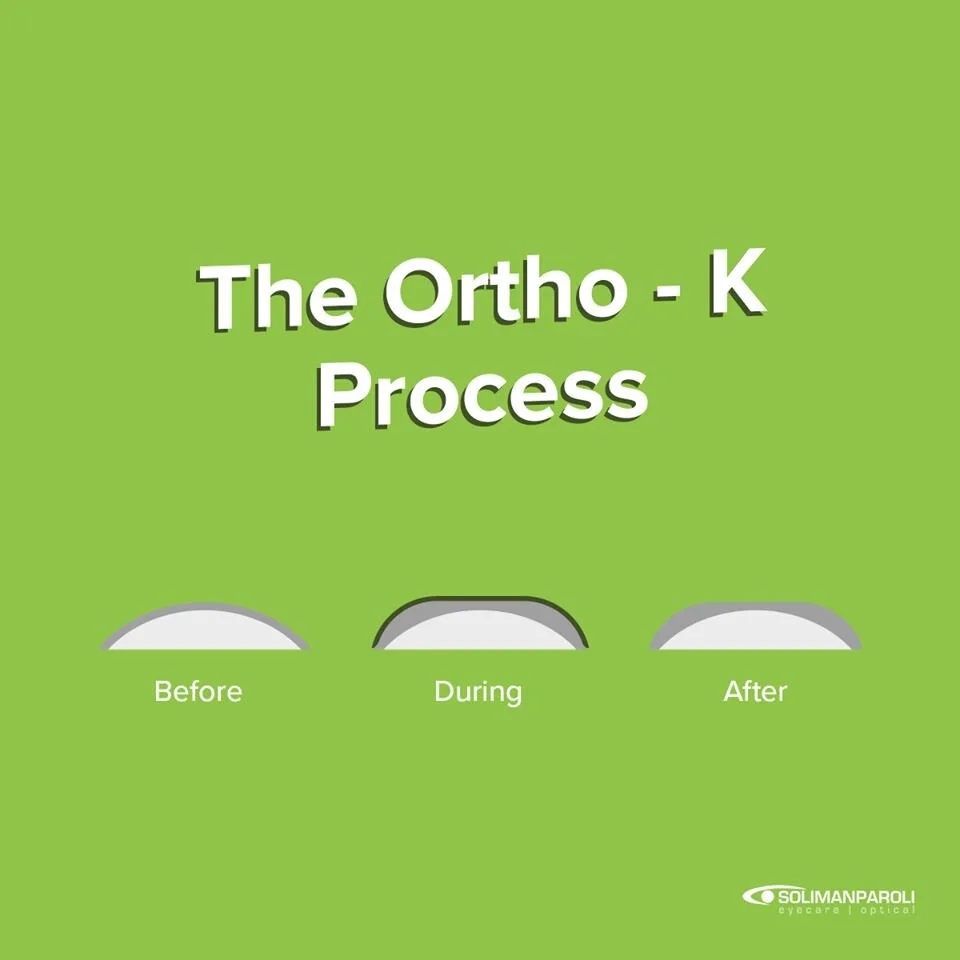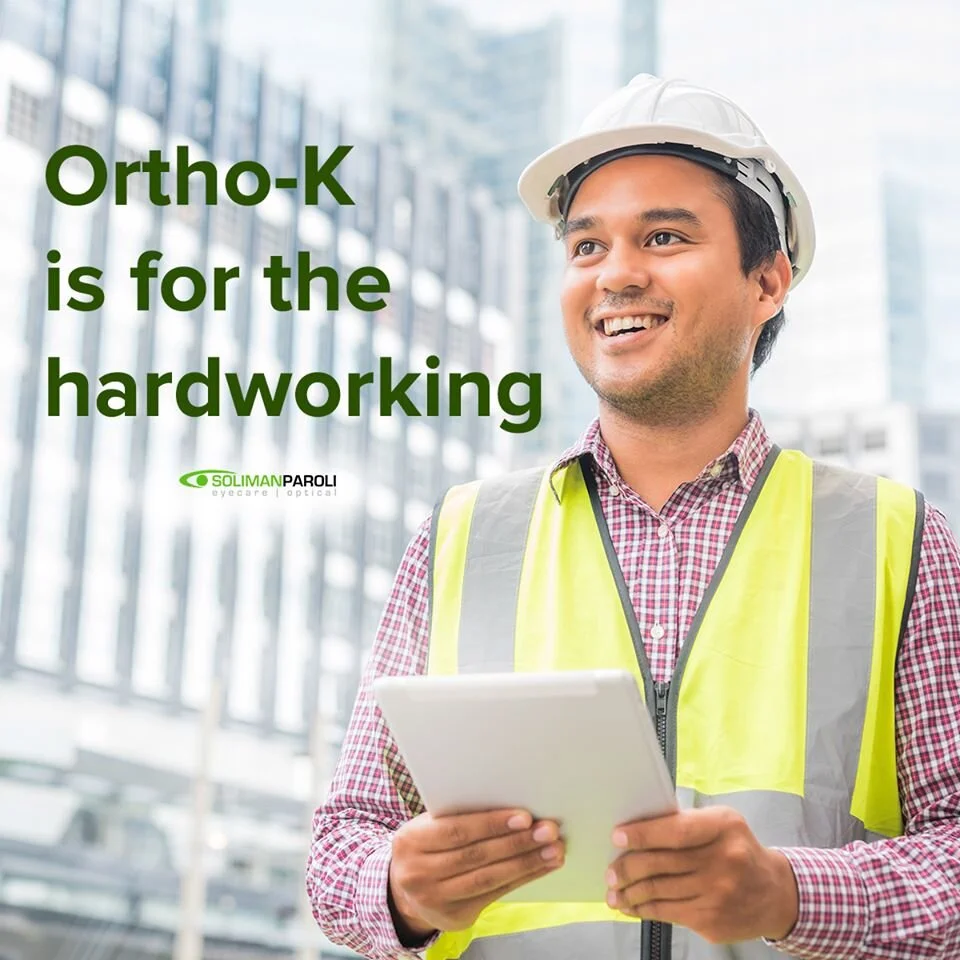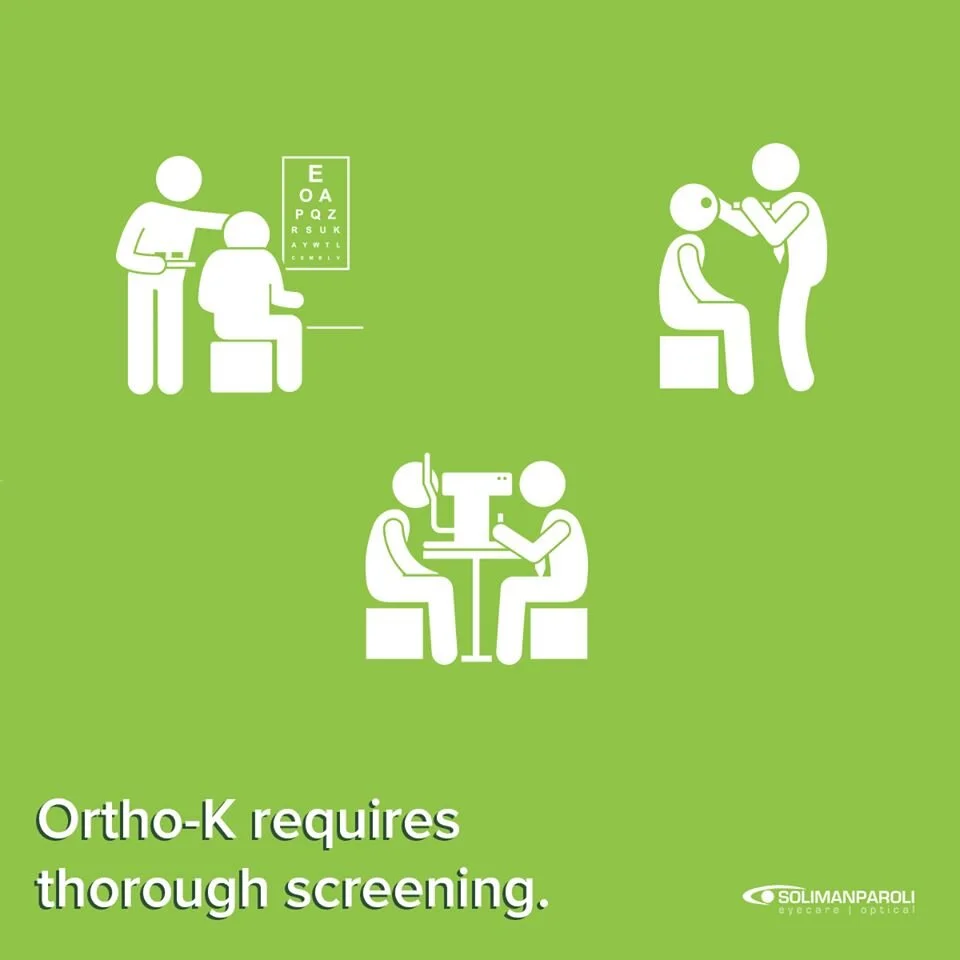Orthokeratology
What is Orthokeratology?
Orthokeratology is the process that uses a specially designed contact lens to safely reshape the Cornea to give the user a clear functional vision. The contact lens is worn before sleeping at night and removed after waking up free from eyeglasses and contact lenses during the day. It is also referred to as, "Ortho-k."
An illustration on how OrthoK lenses flattens the Cornea temporarily
Ortho-K is an effective way to correct Myopia, or Nearsightedness.
Myopia, is the most common reason for an impaired vision for those individuals under the age of 40.
Some research says that in the past few years, this vision problem is growing at an alarming rate. It is expected that by the year 2050, fifty percent of the world's population would be myopic. A study has also established that orthokeratology lens designs slow the advancement of Myopia.
Some modern ortho-k lens designs are useful in correcting farsightedness and Presbyopia as well.
Farsightedness is the condition in which near, and sometimes even the far vision, depending on the severity, may be blurry. The level or degree of a person's farsightedness influences his or her focusing ability. Some persons with severe farsightedness may see only objects that are very far, while those with mild farsightedness may have the capacity to see closer stuff.
On the other hand, Presbyopia is the loss of near focusing capability, and it comes with age. Many individuals start to notice its effects sometime after reaching the age of 40. Its symptoms begin when a person is having trouble seeing the small print clearly, and that includes messages from phones, texts from books and newspapers, and the like.
Who can undergo orthokeratology?
OrthoK are good for people working in dusty environments or for people who experiences dry eye with their soft contact lenses
The best candidates to undergo the process of orthokeratology are those who are still at their young age, usually within the age of 7 to 20, however, it is still also suitable for those most adults. Those with Myopia of -1.50 to -6.00D, although -10.00D can still be possible, and Hyperopia not higher than +2.00D.
Although the process is proven to achieve its best success for those individuals who are under 40 years old, Ortho-k is also recommended for those who have Presbyopia.
Children who are too young to undergo LASIK are also good candidates, as Orthokeratology can keep up with their changing vision.
On the other hand, some people are not encouraged to undergo this process. These are those people with dry eye syndrome, and people with large pupil size, and high Myopia. People with existing eye diseases are not good candidates of Orthokeratology, which is why a thorough examination of the health of the eye, especially the Cornea, is a must.
How is Orthokeratology fitting done?
The procedure starts with a careful examination by an eye care professional. The process begins by getting some preliminary tests such as the patient's External and Internal eye health, Visual Acuity, Refraction, etc.
After the patient appears as a good candidate for Orthokeratology, the doctor will get essential parameters for the Orthokeratology lens. Parameters such as getting the curvature of the Cornea using sophisticated machines like a Corneal Topographer is a must.
Once all the Preliminary tests and parameters are recorded, it's time for the doctor to start fitting OrthoK trial lenses. This is to ensure a proper fit and positioning of the lens in the patient's eye. The trial lens may cause a gritty feeling on the eye, a practitioner may instill anesthetics to make the experience comfortable for the patient.
After the final parameters are recorded, the clinic will order the patient's Orthokeratology lens.
After the ordered lens is released to the patient, they are advised to do a series of follow up visits starting from the day after releasing the lens to check the vision and health of the eye.
Also, they are an excellent time to check the status of the OrthoK lens. Follow up visits usually happen every quarter of the month.
What to Expect from Ortho-K?
One week after releasing the lens, vision may be close to our target goal. After one month, we may see the patient's prescription to be stable.
A 20/20 vision is what eyecare professionals would usually aim for each patient who undergoes the procedure. However, a 20/40 vision can already be an acceptable outcome and can be considered a success for the patient. The lens is aimed to give a patient with everyday functional vision.
Ortho-K for children
Children with one or both Nearsighted parents has a significant chance of inheriting their Nearsightedness. Research shows that Orthokeratology can slow down the progression of Nearsightedness in children. This makes Orthokeratology a recommended approach in slowing down Nearsightedness among children aged 7 to 20, where Nearsightedness tends to progress.
The process is safe for Children because of all the improvements done in the cleaning solution, as well as because parents can monitor the child’s daily habit since the lenses are worn at night, and removed in the morning when parents or guardians are at home.
Ortho-k for the Active Youth
Young people are usually active in so many things – sports and other physical activities that need a functional vision.
That is why nearsighted kids are often great candidates for orthokeratology. Wearing the lenses at night, and removing them during the waking hours, gives children participating in active sports the freedom from the restraints they experience using eyeglasses and contact lenses.
References:
Bailey, G. (2019, April). One Vision Problem You Can't Avoid. Retrieved July 20, 2019, from https://www.allaboutvision.com/conditions/presbyopia.htm
Bailey, G. (2018, November). What is Myopia (Nearsightedness)? Retrieved July 20, 2019, from https://www.allaboutvision.com/conditions/myopia.htm
Farsightedness. (2018, June 12). Retrieved July 20, 2019, from https://www.mayoclinic.org/diseases-conditions/farsightedness/symptoms-causes/syc-20372495.
GP Lens Institute (GPLI). (2018, September). Orthokeratology (Ortho-k): Is Corneal Reshaping Right for Me or My Child? Retrieved July 18, 2019, from https://www.contactlenses.org/orthok.htm.
Dr. Mark Paroli is a board certified Optometrist who has a special interest in Customized Ocular Proshtesis fitting, and specialized Contact Lenses like Orthokeratology.





